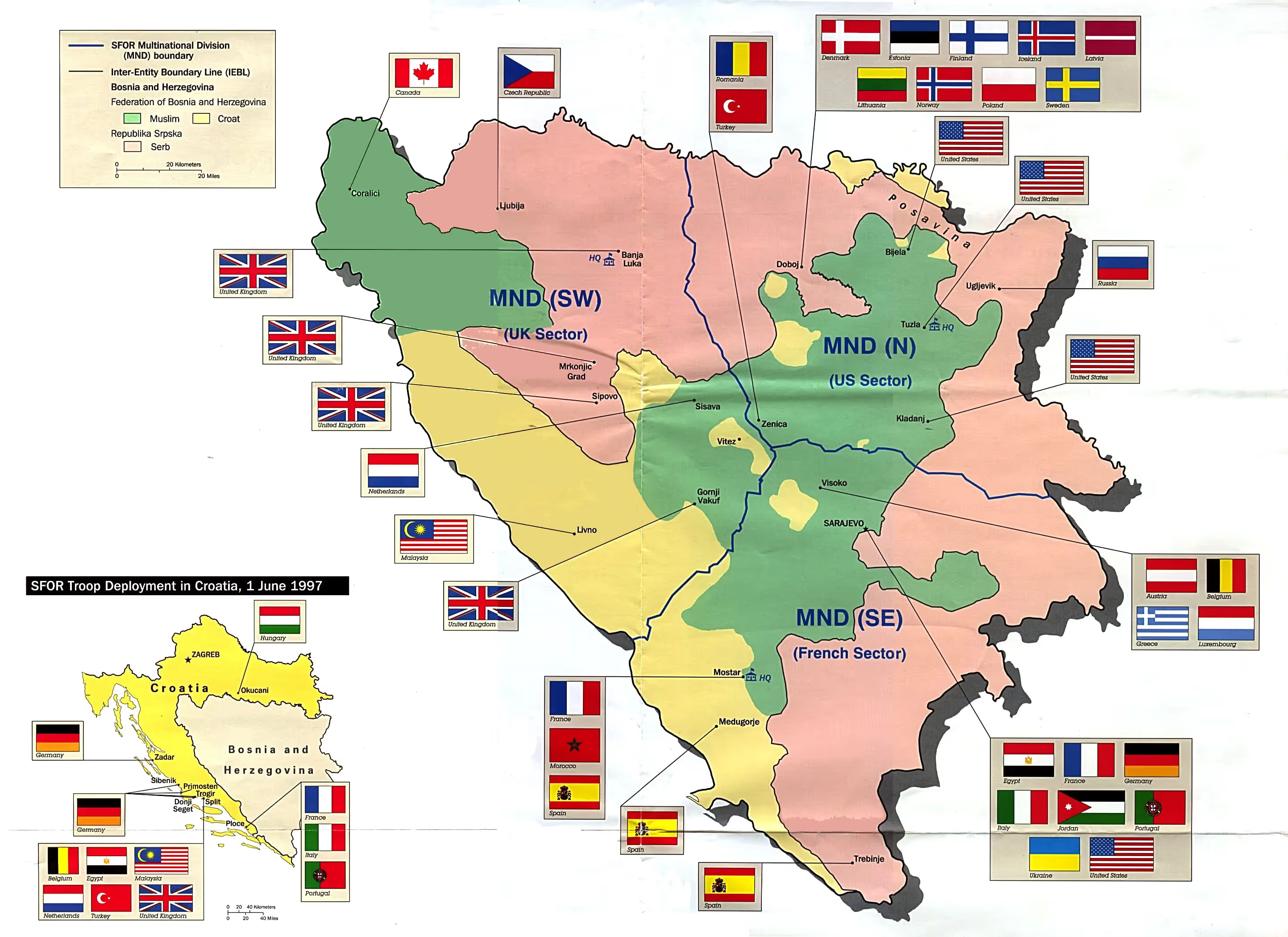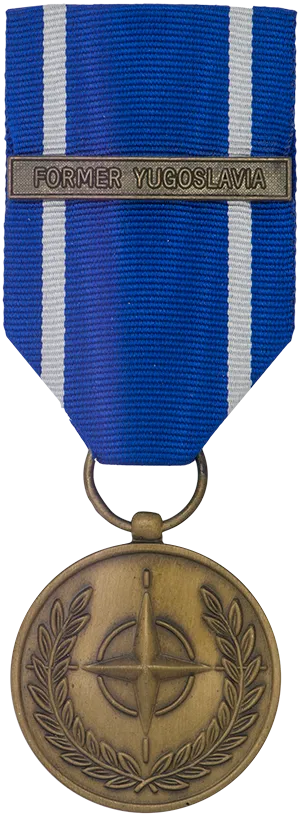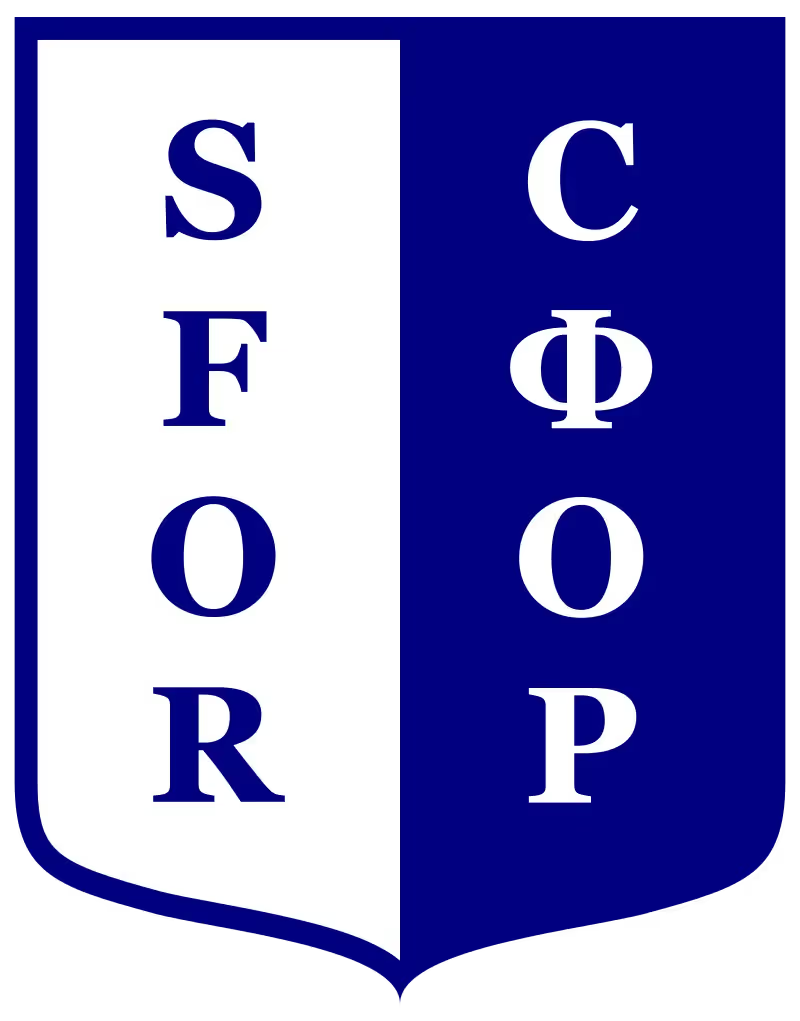NATO Stabilization Force (SFOR) in Bosnia-Herzegovina
WARNING: Due to the nature of the conflict and operations in the Balkans, some of these articles may contain graphic or disturbing content. Please use your discretion. If an article adversely affects your mental health, consider seeking help by consulting the agencies listed in the Mental Health Resources section of this website.
Canadians in Bosnia-Herzegovina, SFOR
Canadians in Bosnia-Herzegovina, SFOR In December of 1996, when the IFOR phase ended, a stabilization force (SFOR) was created in order to secure the environment for local authorities and international agencies. The troops of SFOR patrolled Bosnia-Herzegovina so that people could go about their daily business without fear. Part of a major international effort to help Bosnia-Herzegovina reshape itself as a democratic European nation, SFOR had a mandate to deter violence and provide the safe, secure environment needed for the consolidation of peace in Bosnia-Herzegovina. Its goal was to promote a climate in which the peace process could be sustained without the presence of NATO forces.
Canada's participation in SFOR, conducted under Operation PALLADIUM, began with approximately 1,200 personnel: an infantry battalion group with tactical helicopter support; an armoured reconnaissance squadron; an engineer squadron; an administrative company; a National Support Element; and a National Command Element.In December of 2003, due to a vast improvement of the security situation in Bosnia, NATO announced the reduction in the number of SFOR troops from 12,000 to 7,000 by June 2004. In keeping with NATO direction, Canada's military participation was similarly reduced to about 650 CF members in April 2004.Video: why we are here, Sarajevo, 1997.
The Stabilisation Force in Bosnia and Herzegovina (SFOR) was a NATO-led multinational peacekeeping force deployed to Bosnia and Herzegovina after the Bosnian war. Although SFOR was led by NATO, several non-NATO countries contributed troops. It was replaced by EUFOR Operation ALTHEA in December 2004.
The stated mission of SFOR was to "deter hostilities and stabilize the peace, contribute to a secure environment by providing a continued military presence in the Area Of Responsibility (AOR), target and co-ordinate SFOR support to key areas including primary civil implementation organisations, and progress towards a lasting consolidation of peace, without further need for NATO-led forces in Bosnia and Herzegovina".Canada had participated in IFOR and the SFOR under the names Operation ALLIANCE and Operation PALLADIUM.
With the transition to EUFOR, the Government of Canada approved a force of about 85 personnel to participate in the new mission. Accordingly, Rotation 15 of Operation PALLADIUM was used to close-out the mission and a new operation was created to assist in the transition from SFOR to EUFOR, and then to participate in EUFOR. This new mission was named Operation BRONZE.Operation BRONZE started on 18 September 2004 with the organization being named Task Force Banja Luka. The force was divided into six sections, with personnel employed at SFOR Command HQ in Sarajevo, with Liaison and Observation Teams in Bihac, with Multinational Task Force (Northwest), a field HUMINT team and a national support cell in Banja Luka, and a movement detachment in Zagreb, Croatia.With the change of command and handover to EUFOR on 2 December 2004, the 85 personnel of Operation BRONZE became part of that new mission.
Initially, SFOR had over 32,000 troops. As Bosnia returned to normalcy, the number of forces was reduced to about 7,000 by June 2004. At the North Atlantic Council meeting in Istanbul on 28 June 2004, the members decided to end the alliance’s operation by the end of that year. The European Union agreed to deploy a force to replace NATO. SFOR began the work to transition to the European Union Force in Bosnia Herzegovina (EUFOR). The change of command date was 2 December 2004. This transition was given the blessing of the United Nations Security Council with Resolution 1575 (2004) of 22 November 2004.
SFOR was divided into three zones of operation:
Mostar MND(S) – Italian, Franco-German, Spanish; Banja Luka MND(W) – American, British, Canadian, Czech, Dutch. The British code name for their activities in IFOR was Operation RESOLUTE and SFOR was Operation LODESTAR (to June 1998) and Operation PALATINE (from Jun 1998). The Canadian mission was named Operation PALLADIUM (1996 to 2004). Tuzla MND(N) – American, Turkish, Polish, Russian, Norwegian, Swedish, Danish. (Some units had troops stationed outside the assigned zone). The three Areas of Operation (AO) were known collectively as Multi-National Divisions (MND) until the end of 2002 where they were reduced in scope to Multi-National Brigades.

Troops deployments in BiH, 1997.
SFOR operated under peace enforcement, not peacekeeping, rules of engagement. For example, it was cleared, in 1997, to neutralise Serb radio-television facilities. During its mandate, SFOR arrested 29 individuals who were charged with war crimes. Those arrested were transferred to the International Criminal Tribunal for the Former Yugoslavia in the Netherlands.

The ribbon is dark blue the colour of NATO with two white strips on either end representing peace. The tour numerals are Arabic script and made of bronze.




